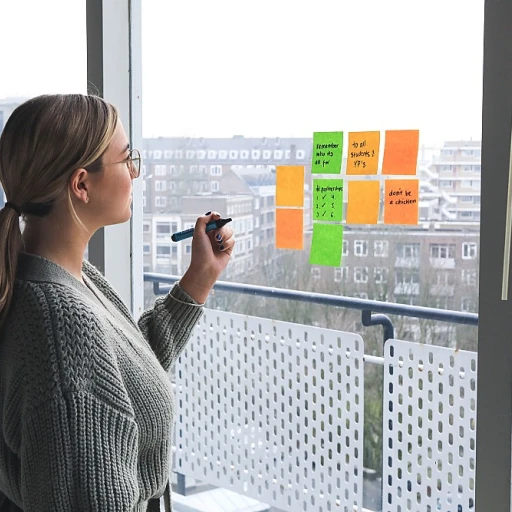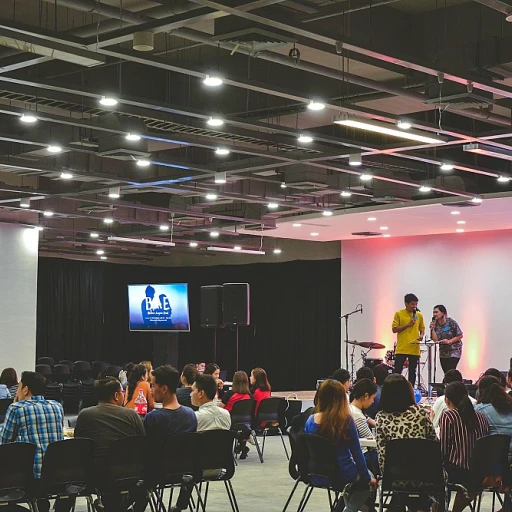
Understanding Current HR Training Process Problems
Identifying Key Challenges in Current HR Training
Human resources training processes face numerous hurdles, impacting the overall effectiveness of a company's employee engagement and development strategies. Understanding these challenges is crucial for enhancing employee experience and maximizing resources. In the face of evolving workplace dynamics, organizations must address these issues to stay competitive and nurture top talent.- Outdated Training Methods: Many companies still rely on traditional training programs that may not align with current learning development needs. This can hinder employee engagement and skill acquisition.
- Skills Gap: There is often a discrepancy between the skills employees hold and those required by the company. Bridging this gap is essential for effective performance management and leadership development.
- Inefficiencies in Onboarding Processes: New employees may struggle with comprehensive onboarding, affecting their ability to integrate into teams and contribute effectively.
- Lack of Personalization: Training programs that aren't tailored to individual employees can fall short, failing to meet specific development needs and aspirations.
- Conflict Resolution and Leadership Training: Addressing interpersonal conflicts and developing leadership skills requires focused training development, which many current programs overlook.
The Impact of Technological Advancements on Training
Shaping the Future of Training Through Technology
The landscape of employee training has transformed significantly with the rapid advancements in technology. These changes present both opportunities and challenges for companies aiming to enhance their human resources capabilities. In this context, understanding the drawbacks of traditional training methods can be pivotal. Modern technological aids have become integral in addressing these challenges, offering new ways to engage employees and refine learning development strategies. Employee onboarding, once a linear and often overlooked process, now has various digital tools that facilitate a more enriched learning experience. The integration of cutting-edge technology into the workplace allows companies to cater to diverse learning styles, making training programs more inclusive and comprehensive. This transition is crucial, as a personalized approach ensures that employees feel valued, resulting in better performance management and higher employee engagement.Harnessing Virtual Reality and AI for Training Success
Emerging technologies like virtual reality (VR) and artificial intelligence (AI) are reshaping the dynamics of training development. VR can simulate real-world scenarios, providing employees hands-on experiences without real-world consequences. This interactive training method is especially beneficial in leadership development and conflict resolution. It aids employees in practicing skills in a controlled environment. AI, on the other hand, personalizes the learning process by assessing individual progress and suggesting tailored training programs. By providing real-time feedback and creating adaptive learning paths, AI helps close the skills gap, ensuring employees are equipped for future workplace demands. Incorporating these technologies into the human resources training fabric holds the promise of unlocking top talent and optimizing the onboarding process.Ensuring Seamless Integration of Technology
While technology offers numerous advantages, it requires a strategic implementation approach. Human resources teams must ensure the seamless integration of technologies into existing structures. This often involves additional investments in training methods and developmental resources to upskill both leadership and the workforce. Resource allocation becomes critical, as successful technology adoption depends on continuous check ins and feedback loops. Furthermore, balancing traditional learning techniques with innovative approaches ensures that employees gain a well-rounded experience, boosting their overall capacity for growth and adaptability within their roles. Navigating these complexities can be simplified by understanding the concept of a hiring event, which offers insights into the evolving nature of work engagement strategies. This knowledge empowers organizations to handle training challenges more effectively, paving the way for a more competent and future-ready workforce.Adapting to a Remote and Hybrid Work Environment
Embracing Flexibility in Remote and Hybrid Settings
The shift towards remote and hybrid work environments has transformed the training methods employed by companies to develop their workforce. With work-from-home becoming more commonplace, human resources face unique challenges in adapting employee onboarding and ongoing employee development programs to suit this new normal. Firstly, it’s essential to consider that the absence of traditional offices requires a revamp in the onboarding process. New employees might feel isolated, impacting their engagement and experience. Thus, ensuring effective virtual onboarding is critical. Digital resources must be utilized to replicate the sense of involvement and belonging typically fostered in physical workplaces. Online platforms that facilitate communication and collaboration are crucial; they can help integrate employees into the company culture seamlessly. Moreover, leadership must prioritize employee training programs that cater to diverse work settings. By focusing on flexibility and accessibility, companies can address potential skills gaps and help employees thrive regardless of their physical location. Regular check-ins and virtual team building can enhance employee experience, reinforcing team dynamics and conflict resolution strategies crucial in remote settings. To manage employee training and development effectively in a dispersed workforce, companies need to leverage technology not just for training delivery but also for tracking progress and measuring the effectiveness of learning initiatives. This will guide improvements in training development, ensuring programs are responsive to evolving needs. Adapting to these changes is vital for retaining top talent in a competitive job market. By investing in robust training methods and leveraging tools for performance management, companies can ensure their teams remain engaged, resilient, and productive.The Role of Soft Skills in Future Workplaces
The Importance of Soft Skills in Modern Workplaces
As organizations evolve, the focus on employee training is shifting from purely technical abilities to a more balanced approach that includes soft skills. These skills, such as conflict resolution, communication, and teamwork, are critical in today’s work environments—be it remote, hybrid, or in-person. While technical skills remain important, companies are increasingly recognizing the role soft skills play in effective leadership and performance management.
Top talent that excels in collaborative work environments often possess strong soft skills. They help foster employee engagement and positively impact the employee experience. Programs designed to enhance these skills should be integrated into existing training development initiatives to ensure that employees feel equipped to navigate nuanced workplace interactions.
Moreover, developing a workforce with solid soft skills can help a company address the challenges of transitioning to new work environments. For instance, soft skills training can alleviate issues that arise during the onboarding process and improve conflict resolution within teams. Ultimately, investing in the development of these skills is not just beneficial for individual growth but also contributes to organizational success.
Strategies for Continuous Learning and Development
Embracing Lifelong Learning and Development
The future of work demands a shift from the traditional training programs to more dynamic and adaptable learning development strategies. Companies need to foster an environment where continuous learning and development are ingrained in the workplace culture. This involves recognizing the skills gap and equipping teams with the necessary training resources to bridge that gap effectively. Creating an ecosystem that supports lifelong learning involves several key components:- Customizing Training Programs: It's essential to design training programs that cater to the diverse needs of employees. By personalizing the employee training experience, management can address specific challenges and help employees feel more engaged and motivated.
- Implementing Regular Check-Ins: Regular feedback and check-ins between leadership and employees can identify areas for improvement and champion effective conflict resolution. This proactive communication process can significantly enhance both team morale and individual performance management.
- Focusing on Leadership Development: Developing strong leadership within teams is crucial for guiding employees through their professional journey. Leadership development programs can prepare top talent for future management roles, ensuring a robust pipeline of capable leaders within the company.
- Incorporating Soft Skills Training: As highlighted in our discussion on the role of soft skills, focusing on skills such as communication and conflict resolution can enhance employee engagement and contribute to a harmonious workplace.
- Utilizing Technology-Driven Training Methods: With technological advancements reshaping training methods, it's crucial to leverage platforms that offer remote learning and development opportunities. These digital tools can provide flexible learning schedules that align with the modern work environment.












